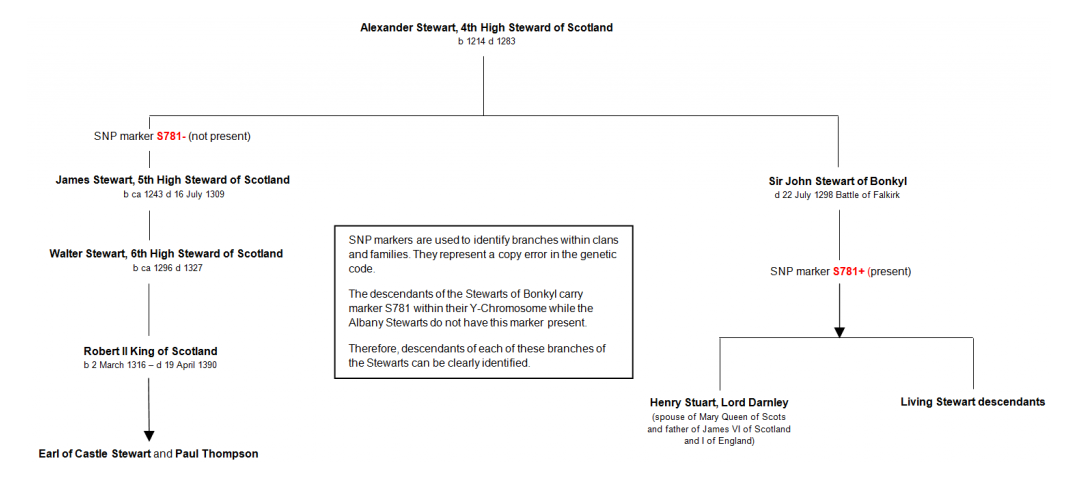Genetic genealogy research carried out by researchers at the University of Strathclyde has revealed exciting new information about the origins of one of the longest-established noble English families. They may have been here longer than anyone had imagined.
The Berkeley family, which has held the titles of Marquess of Berkeley, Earl of Berkeley and Baron Berkeley and still own Berkeley Castle in Gloucestershire, have been established in that County since before the Norman Conquest of 1066. They are generally recognised as one of only a handful of families who can reliably trace their ancestry back through the male line to before 1066.
Their earliest known ancestor was Eadnoth, who served as a Royal official to King Edward the Confessor and King Harold in the years leading up to the Battle of Hastings. Eadnoth’s grandson, Robert Fitzharding, was granted the Barony of Berkeley. His son, Maurice, married one of the Berkeley family, whose surname he took on.
Eadnoth was an Anglo-Saxon noble. However, DNA testing of male line descendants of the family shows that their origins may date back even further to an ancestor belonging to a genetic group that arrived in England before the Anglo-Saxons, who only began to settle from the middle of the 5th century.
The male line ancestor of Eadnoth belonged to a people who appear to have travelled over time from southern to northern Spain, with some eventually arriving in Britain either before or during the Roman period. Perhaps the ancestor from this same genetic group might have been a Roman soldier, recruited in Spain, who settled in Britain during the Roman occupation (1st-5th century).
Either scenario would suggest that Eadnoth’s ancestor had settled in Britain before the Anglo-Saxon era. With the subsequent dominance of Anglo-Saxon culture, it would be inevitable that over time the family would adopt Anglo-Saxon names and become assimilated into the Anglo-Saxon culture. The family maintained its status from the end of the Anglo-Saxon period into the Norman period, a very unusual occurrence, but may also have held this position from an even earlier Roman or pre-Roman period. Is this perhaps an example of the longest period of noble status maintained in the male line by one family?
Members of the Berkeley family at Berkeley Castle were delighted to hear of the results of this research. Mr Charles Berkeley, eldest son of the present owner John Berkeley, commented, “It is very interesting to hear that, through recent DNA tests done on members of the Berkeley family, the origins of the male line of the family have been established as dating from pre-Anglo-Saxon times. Although regarded as Anglo-Saxon, this research suggests that our ancestors were in England at an even earlier period.”
The genetic genealogy research was carried out by researchers from the Genealogical Studies Postgraduate Programme at the University of Strathclyde in Glasgow, originally in connection with their Battle of Bannockburn Family History Project. A number of the Berkeley family took part in the Battle in 1314.
25 August 2015

